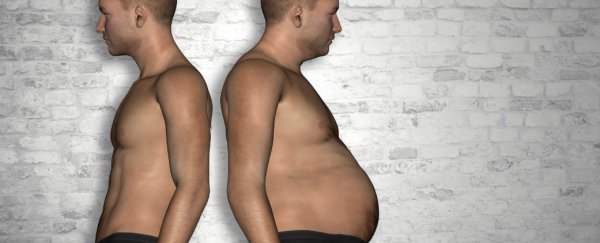For the first time, researchers in the US have identified a new type of fat cell in humans that can convert unhealthy white fat into healthy brown fat.
Now known as 'beige' fat, these cells are located within person's white fat, which in high amounts has been directly linked to diabetes and obesity. When stimulated by some kind of stress, such as chronic cold exposure, this beige fat converts the white fat cells into brown fat cells. This is great for a person's health, because brown fat generates heat by burning energy, and is actually more closely related to healthy skeletal muscle than it is to white fat.
"This finding brings us another step closer to the goal of our laboratory, which is engineering fat cells to fight obesity," said one the team, biologist Shingo Kajimura from the University of California, San Francisco, in a press release. "We are trying to learn how to convert white fat into brown fat, and until now, it had not been demonstrated that this recruitable form of brown fat is actually present in humans."
For years we've known that human are born with a whole lot of brown fat - a much higher percentage than is found in adults - because all that energy-burning for heat gives babies a natural defence against the cold. Bears are also known to have great stores of brown fat, which helps carry them through the bitter winter months.
Then in 2009, it was discovered that as adults, we actually retain a whole lot of brown fat, but no one could figure out if it was the same type of brown fat that babies have, or a slightly different kind. Publishing in Nature Medicine today, Kajimura and his team describe how they've now managed to isolate and clone individual brown fat cells taken from two adult volunteers, and compared these to the brown fat cells found in babies on a genetic level. It turns out that as adults, we get a new type of fat cell: a biege fat cell that hides inside our white fat and produces brown fat when our bodies are exposed to stress.
Now knowing the genetic basis for these beige fat cells, the team can reliably culture them in the lab and test their development, heat-producing capacity, and ability to convert white fat to brown when faced with a bunch of different stimuli. Getting to know how beige fat cells work could mean the development of drugs that mimic their behaviour to fight obesity.
But the team had better be quick - just last month, a separate research group in the States announced that they've been testing a new drug that converts white fat into brown fat using a different method. As Fiona MacDonald reported in March, after taking the drug daily for approximately two weeks, genetically obese mice lost weight and also more than 50 percent of their fat mass. And mice that were obese as a result of their diets had a similar response.
"If you think about obesity, it's generally caused by an imbalance between energy intake and energy expenditure," said Kajimura. "So far, all of the approved anti-obesity medications reduce energy intake by decreasing appetite. They work in the short term, but they often have side effects such as depression. If we have a compound that increases energy expenditure by recruiting new brown fat and activating brown fat thermogenesis, then it might work synergistically with conventional anti-obesity medications. This would be a novel approach to modulating whole-body energy balance."
We've got everything crossed that this will work.
